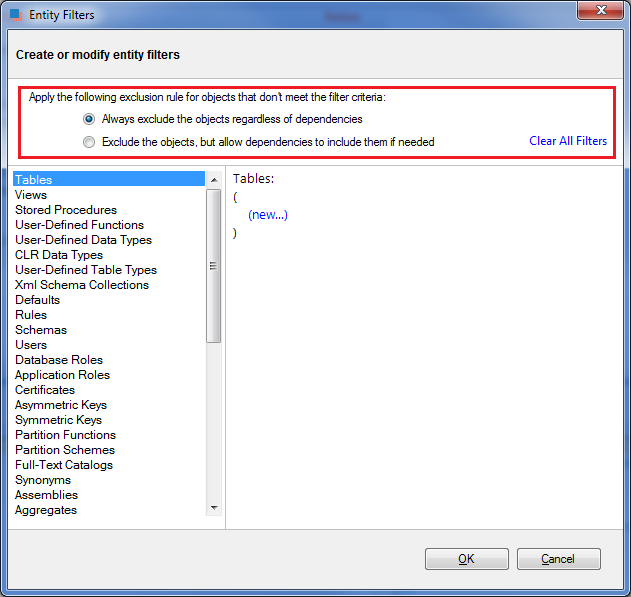An entity filter provides two options, located at the top of the filter form, that determine the method by which database objects are excluded:
- The first option always excludes objects that do not meet the filter criteria. The excluded objects do NOT appear in the comparison grid at all.
- The second option excludes objects that do not meet the filter criteria, but allow the database dependencies to include them (if these objects are needed). Excluded objects in this case appear unchecked in the comparison grid.
Please note that the second exclusion rule could produce, in some cases, unexpected results. You might notice that database objects, explicitly excluded by the filter, still appear in the synchronization script.
Consider, for example, the following scenario:
A database contains a table named "employees" and a view named "v_employees" that depends on it. A table filter has been defined that excludes the "employees" table. Since the view "v_employees" depends on the "employees" table, the "employees" table will be included if the view needs to be synchronized.
If you wish to always exclude database objects that do not meet the filter criteria, regardless of the dependencies, do one of the following:
- Select the first exclusion rule OR
- Leave the second rule selected, but go to the Comparison Options form and uncheck the option "Include dependent objects".
The first option is recommended.
Total compare from data to schema with IDERA SQL Comparison Toolset. Learn more > >
